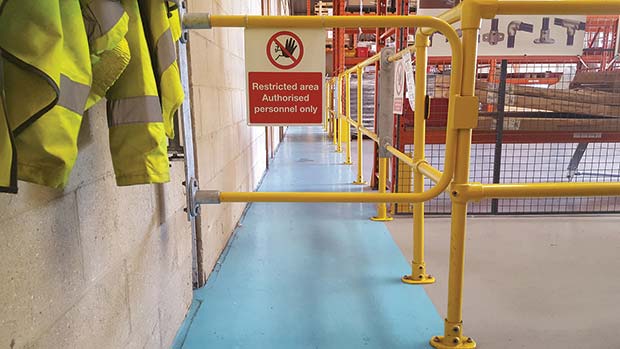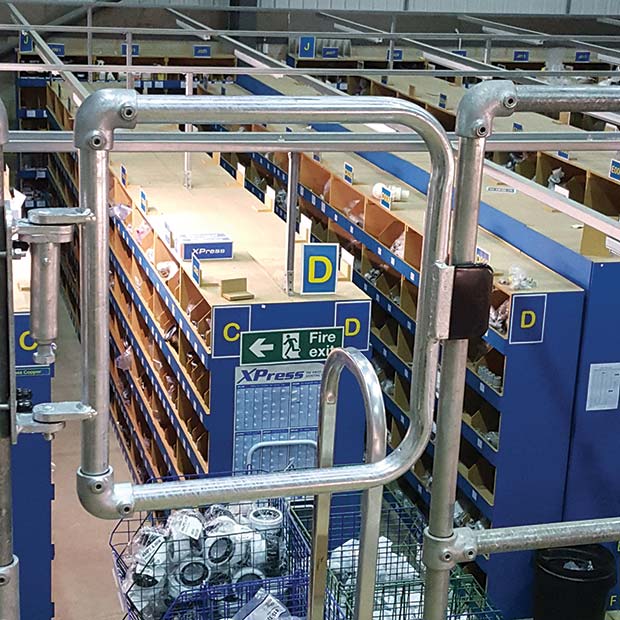Warehouses are dangerous working environments due to the potential hazards that workers face in these surroundings on a daily basis. Christian King, General Manager of Kee Systems discusses the safety measures that warehouse managers should be considering to help eliminate serious injuries and fatalities.

In 2007, the Health & Safety Executive (HSE) worked in conjunction with the Warehousing Health and Safety Forum to develop ‘Warehousing and Storage: A Guide to Health and Safety’. This resource focusses on responsible warehouse practices, general prevention of avoidable risks and hazards and attendant information of accident and emergency procedures. The guide states that the most common accidents within warehouses, include slips and trips, falls from height, being hit by a moving or falling object or moving vehicle, manual handling and hitting something fixed or stationary.
Protecting workers from vehicles
In 2015, the HSE stated that there were over 5,000 accidents involving transport in the workplace, with around 50 of these resulting in people being killed. For this reason, it is vital to segregate people from vehicles within warehouses. The most effective way to ensure that workers and vehicles can move safely around the workplace is to provide a safe demarcated route for the workers to walk along, with protective barriers and guardrails. These systems can provide a safe route within an area where vehicles are working or prevent access to a specific area. By combining spring loaded self closing gates with the barrier or guardrail, workers are made aware that they are leaving a safe area when they pass through the gate.

Preventing falls from height
Transporting pallets around warehouses can present a number of safety issues. This is particularly apparent when the worker has to load and unload pallets on mezzanine floors, as this could result in a fall from height. Pallet gates are a great option for eliminating this safety issue, as they provide a solution that results in employees always being separated from the hazard. Thanks to a simple design, when the gate is open for the worker to move the pallet towards the edge of the mezzanine floor, the other side of the gate is closed, ensuring the staff member or the pallet will never fall to the lower level, eliminating injury to themselves and others.
Avoiding accidents around machinery
‘BS EN 14122 Safety Machinery – Permanent means of access to machinery’ outlines the general requirements for safe access to machines where a fixed means of access is needed. Part 4 relates specifically to fixed ladders and can also be applied to ladders which are not permanently fixed to the machine but move to the side or pivot for operations.
If a ladder is being used to access the machinery, then a safety solution needs to be in place, and I would recommend using a self-closing safety gate. These gates overcome the risk of human error that’s associated with chains and sliding tubes as they automatically close behind the user.
By installing these types of safety solutions, managers will eliminate the risk of injury to their staff.
KEE SYSTEMS




Comments are closed.